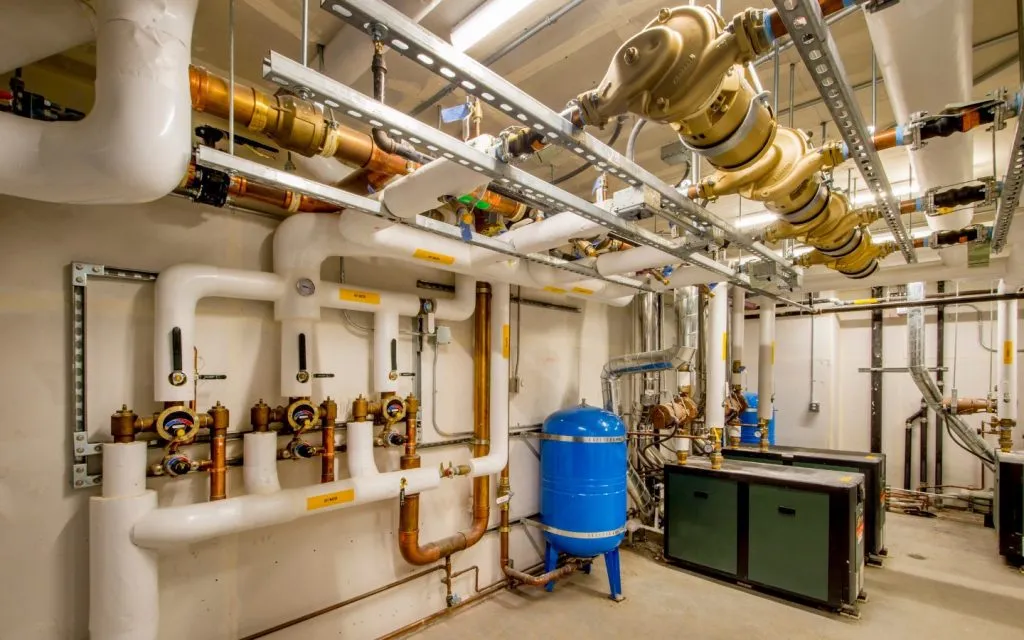Learning
The Impact of Supply Chain Issues on the Electronic Components Industry
The electronic components industry is the backbone of modern technology, providing the essential building blocks for a wide range of devices we rely on daily. However, recent supply chain issues have overshadowed this crucial sector.
In this comprehensive article, we’ll explore the impact of supply chain issues on the electronic components industry, delve into the causes of these disruptions, and consider potential solutions. Additionally, we’ll discuss how companies are looking to sell excess inventory electronic components to navigate these challenges.
The Electronic Components Industry: A Vital Component of Modern Life
Before delving into the challenges, let’s acknowledge the significance of the electronic components industry. These tiny but mighty components are the lifeblood of electronic devices, ranging from smartphones and laptops to cars and medical equipment. They include resistors, capacitors, diodes, transistors, integrated circuits, and more, each with a specific role in ensuring the functionality of electronic devices.
The industry’s importance is evident in the ever-expanding technological landscape. Innovations like the Internet of Things (IoT), 5G connectivity, and artificial intelligence have driven the demand for electronic components to unprecedented levels. Consequently, the industry has experienced substantial growth and transformation in recent years.

Unmasking the Supply Chain Issues
Despite its remarkable growth, the electronic components industry has been grappling with several supply chain issues that have the potential to disrupt production and impact end-users:
1. Global Supply Chain Disruptions
The COVID-19 pandemic exposed vulnerabilities in the global supply chain. Lockdowns, factory closures, and shipping delays disrupted the production and distribution of electronic components. While the pandemic initially triggered these issues, the ripple effects continue to reverberate across the industry.
2. Semiconductor Shortages
Semiconductors, a critical subset of electronic components, have faced severe shortages. The automotive industry, in particular, has been hit hard, with automakers struggling to secure an adequate supply of microchips for vehicle production. This has resulted in production delays and increased costs.
3. Rising Demand and Capacity Constraints
The rapid proliferation of technology has led to soaring demand for electronic components. However, manufacturers have faced challenges in scaling production to meet this demand. Capacity constraints, coupled with supply chain disruptions, have created a bottleneck.
4. Geopolitical Tensions
Geopolitical tensions, trade disputes, and export restrictions have further strained the electronic components supply chain. Manufacturers are forced to navigate an increasingly complex international landscape, impacting their ability to source critical components.

The Impact on the Industry and Beyond
These supply chain issues have a cascading effect, impacting various aspects of the electronic components industry and beyond:
1. Production Delays
Manufacturers face delays in production, affecting the timely delivery of electronic devices to consumers. These delays have financial implications and can harm a company’s reputation.
2. Rising Costs
Shortages often lead to increased component prices, which can erode profit margins for manufacturers. These increased costs are sometimes passed on to consumers, resulting in higher prices for electronic devices.
3. Innovation Hurdles
The electronic components industry thrives on innovation, but supply chain issues can hinder research and development efforts. Companies may struggle to access the components needed to create cutting-edge technologies.
4. Global Economic Impact
The electronic components industry is a significant contributor to the global economy. Supply chain disruptions can have a broader economic impact, affecting jobs, trade balances, and economic growth.
Solutions to Navigate Supply Chain Challenges
The electronic components industry is actively exploring solutions to mitigate the impact of supply chain issues:
1. Diversification of Suppliers
Diversifying suppliers can reduce reliance on a single source for critical components. Electronics manufacturers are increasingly exploring partnerships with alternative suppliers to mitigate supply chain risks.
2. Strategic Stockpiling
Some companies are strategically stockpiling electronic components to ensure a buffer against future supply disruptions. While this approach can be costly, it provides a degree of security.
3. Reshoring and Localization
Reshoring or localizing production is another strategy to reduce dependence on overseas suppliers. This approach enhances supply chain resilience and reduces lead times.
4. Collaboration and Communication
Enhanced collaboration and communication among industry stakeholders, including component suppliers, manufacturers, and government agencies, can help address supply chain challenges more effectively. This includes sharing information about capacity, demand, and potential disruptions.
Exploring Opportunities to Sell Excess Inventory Electronic Components
Amidst these challenges, some companies are exploring innovative ways to navigate supply chain disruptions. One such approach is to sell excess inventory of electronic components. Here’s how it works:
Excess Inventory Solutions
Companies that have accumulated excess inventory of electronic components can sell these surplus components to other manufacturers or businesses in need. This not only helps reduce storage costs but also ensures that these components are put to good use, addressing shortages in the market.
Online Marketplaces
Online marketplaces and platforms specializing in electronic components have emerged as hubs for buying and selling surplus inventory. These platforms connect sellers with buyers, creating a dynamic marketplace that facilitates the efficient exchange of components.
Environmental Sustainability
Selling excess inventory electronic components aligns with environmental sustainability goals. It reduces waste by extending the lifecycle of components and prevents them from ending up in landfills.
The Future of the Electronic Components Industry
As technology continues to advance, the electronic components industry faces both challenges and opportunities. Innovations such as the Internet of Things (IoT), 5G connectivity, and artificial intelligence will continue to drive demand for electronic components. However, supply chain resilience and adaptability will be paramount in ensuring that the industry thrives in the face of disruptions.
In conclusion, the electronic components industry plays a pivotal role in shaping our interconnected world. Supply chain issues have underscored the need for strategic planning, diversification, and collaboration to ensure the continued growth and innovation of the industry. By exploring innovative solutions like selling excess inventory electronic components, companies can not only weather supply chain disruptions but also contribute to a more sustainable and resilient electronic components ecosystem.

Learning
First-Time Buyer’s Guide to the UK Property Market

Entering the UK property market as a first-time buyer can feel both exciting and daunting. The process is filled with potential pitfalls and complex decisions, but with the right guidance, it can be navigated smoothly. The estate agents in Yorkshire demystify the journey from the initial decision to buy a home to the moment you step over the threshold of your new property.
Understanding Your Financial Position
The first and perhaps most crucial step in the home-buying process is understanding your financial situation. This includes assessing your savings, income, and current debts. Here’s how you can prepare:
1. Deposit: Generally, you’ll need at least 5% of the property price as a deposit, though aiming for 10% or more can provide better mortgage rates.
2. Income and Expenses: Use a budget planner to assess your monthly income against your expenses. This will help you understand how much you can afford in monthly mortgage repayments.
3. Credit Score: Lenders will evaluate your credit score to determine your mortgage eligibility. So it’s important to have a good credit score, and you should work on it if required.
4. Mortgage Options: Speak to a mortgage advisor to understand different types of mortgages, such as fixed-rate, variable-rate, and help-to-buy schemes.
Getting a Mortgage Agreement in Principle
A Mortgage Agreement in Principle (AIP) is a statement from a lender indicating how much they’ll likely lend you. You will be a more attractive buyer with an AIP as it shows sellers you’re serious and financially prepared.
Deciding What You Want
Before you start viewing properties, it’s essential to know what you’re looking for. Consider the following factors:
1. Location: Proximity to work, schools, public transport, and amenities are key. Research neighbourhoods to find the best fit for your lifestyle.
2. Property Type: Decide whether you want a flat, terraced house, semi-detached, or detached property. Each has its pros and cons.
3. Must-Haves: Make a list of non-negotiables, such as the number of bedrooms, garden size, and parking facilities.
4. Future Proofing: Consider your future needs. Are you planning to start a family? Do you need space for a home office?
Starting the Property Search
With a clear idea of what you’re looking for, you can begin your property search. Here are some tips:
1. Use Online Portals: Websites like Rightmove, Zoopla, and OnTheMarket are excellent starting points. Set up alerts to get notified of new listings that meet your criteria.
2. Visit Estate Agents: Register with local estate agents who can provide insights into the market and inform you of new properties before they’re listed online.
3. Attend Viewings: Don’t rush this part. Visit several properties to get a feel for what’s available in your price range.
Making an Offer
Once you find a property you love, it’s time to make an offer. Here’s how to approach it:
1. Research: Check the selling prices of similar properties in the area to gauge a fair offer.
2. Negotiate: Don’t be afraid to negotiate. The starting point is most usually the asking price.
3. Conditions: You might include conditions in your offer, such as the inclusion of certain fixtures or a specific moving date.
The Legal Process
If your offer is accepted, the legal process begins. You’ll need a solicitor or licensed conveyancer to handle the legalities. Here’s what to expect:
1. Conveyancing: This is the legal transfer of property ownership. Your solicitor will handle this, including conducting searches, dealing with the Land Registry, and transferring the funds.
2. Surveys and Inspections: Arrange for a property survey to check for structural issues. There are different types of surveys, from basic condition reports to full structural surveys.
3. Mortgage Finalisation: Once the survey is complete and satisfactory, your mortgage can be finalised.
4. Exchange of Contracts: This is when the sale becomes legally binding. You’ll pay your deposit at this stage.
5. Completion: On the agreed completion date, the remaining money is transferred, and you receive the keys to your new home.
Moving In
Moving day can be hectic, but planning can ease the stress:
1. Hire a Removal Company: Book a reliable removal company well in advance. Discover the best deals by getting quotes from multiple companies.
2. Pack Strategically: Label your boxes by room and keep essential items accessible.
3. Notify Utilities and Change Address: Inform your utility providers of your move date and update your address with banks, the DVLA, and other important institutions.
Settling In
Get settled. Introduce yourself to the neighbours, familiarise yourself with the local area, and really start to make the place your own.
Here are a few final tips:
1. Safety Checks: Make sure that your smoke alarms and carbon monoxide detectors are working, and make sure that you know where the gas and electricity meters are located.
2. Maintenance Plan: Keep a record of the smooth functioning of your new home with a maintenance schedule, complete with regular checks and seasonal tasks.
3. Personal Touches: Add personal touches to make the space feel like home. This can be from putting up family photos or redoing the decoration in your rooms.
Conclusion
Buying your very first home in the UK is most definitely a milestone, difficult and full of challenges but rewarding in the end. Such a philosophy guides you in understanding finances and knowing what you want to achieve from detailed research, and seeking professional advice that confidently helps you navigate the property market. Yes, the journey may have its hurdles, but in the end—owning your own home—the reward will be worth the effort. Welcome to your new chapter!
SEE ALSO: Conquer the Chaos: Hacks to Clean Your Home in Half the Time
Learning
5 Health Benefits of Regular Pedicures

There’s nothing quite like a pedicure to keep your feet looking and feeling their best, but did you know that pedicures do more than simply enhance the appearance of your feet? Many people don’t realize that regular pedicures can come with a wide range of health benefits that can promote the well-being of your feet, so here are some ways that your routine pedicure keeps both your toenails and feet in the best condition possible!
Smoother Skin
One of the biggest misconceptions about pedicures is that they only cater to and look after your toenails. While you’ll definitely be leaving each session with a fresh coat of nail polish, your pedicure can also do wonders for the health of your skin. Aside from trimming and shaping your nails and cuticles, you’ll notice that your nail technician also dedicates a few steps to the skin of your feet.
After inspecting your feet and looking for any issues or imperfections that may need to be addressed, your technician will work on an exfoliating scrub to remove any dead skin cells. This step may also be aided by a foot file, which can be used to buff away any calluses and other problem areas manually.
Softer Skin
After your nail technician addresses all the problem areas of your feet and removes any unwanted dead skin cells, he or she will often massage in a moisturizing product, such as lotion, cream, or butter, to ensure that your skin is properly moisturized. These products contain skin-loving ingredients that will ensure that your feet have everything they need to look and feel their best so that you can walk out of your pedicure with a renewed sense of confidence.
Healthier Nails
After your pedicure session, your nails will not only look better due to the fresh coat of nail polish, but they’ll also be healthier and stronger. This is because your nail technician takes their time to ensure that your nails are properly looked after through steps that include deep cleaning, nail trimming, nail filing, and cuticle care. All of these things work together to prevent issues like ingrown nails from occurring, all the while improving the appearance of your nails.
Increased Blood Circulation
While the specific steps included in your pedicure will depend on the beauty salon, most pedicures will have a massage step somewhere in the mix. One of the often overlooked benefits of these massages is the increased blood circulation, which can deliver more nutrients and oxygen to your feet and nails, promoting their health and appearance. Aside from that, better blood flow means reduced tension and soreness, as well as better distributed heat throughout your body.
Reduced Infections
A significant amount of dirt and bacteria can build up on your feet without you even realizing it, but pedicures can be a great way to prevent these from happening in the first place. The exfoliation step of a pedicure removes dead skin cells as well as all the debris that may have accumulated underneath, and the deep cleaning of your toenails and cuticles also gets rid of any impurities that may have slipped beneath them, which can stop infections from happening.
These are some of the many health benefits that you can look forward to at your next pedicure appointment. However, it’s worth noting that you need to book regular sessions to truly reap all the rewards. This can be difficult, especially when you don’t feel like driving to your nearest nail salon after a long day, but the good news is that you can enjoy the salon experience in the comfort of your own home with a home pedicure service.
Learning
Commercial Boiler Installation Services London

For businesses in the bustling city of London, having a reliable heating system is crucial. Whether you’re opening a new office, expanding your current premises, or simply upgrading an outdated system, commercial boiler installation services for businesses in London are essential to ensure your operations run smoothly and efficiently. Proper installation and maintenance of commercial boilers can make a significant difference in energy efficiency, cost savings, and the overall comfort of your workspace.
The Importance of Professional Installation
When it comes to installing a commercial boiler, professional expertise is paramount. Here’s why:
- Efficiency and Performance: Professional installation ensures that your boiler operates at peak efficiency, reducing energy consumption and lowering utility bills. A well-installed boiler can effectively meet the heating demands of your business without unnecessary energy waste.
- Safety: Commercial boilers are complex systems that require precise installation to operate safely. Professional installers adhere to stringent safety standards and regulations, minimizing the risk of accidents and ensuring the safety of your employees and premises.
- Compliance with Regulations: Commercial properties are subject to various building codes and regulations. Professional installers are well-versed in these requirements and ensure that your boiler system complies with all local laws and standards.
- Longevity and Reliability: Proper installation is critical to the longevity and reliability of your boiler. A professional installation can prevent common issues such as leaks, pressure problems, and system failures, ensuring that your boiler runs smoothly for years to come.
Key Considerations for Commercial Boiler Installation
When planning for a commercial boiler installation, several factors need to be considered:
- Type of Boiler: The type of boiler you choose will depend on your business’s specific needs. Options include gas boilers, oil boilers, and electric boilers, each with its own set of advantages. Consulting with a professional can help you determine the best choice for your business.
- Sizing and Capacity: The boiler’s size and capacity must match the heating demands of your commercial space. An undersized boiler will struggle to meet your needs, while an oversized one will lead to inefficiencies and higher costs.
- Location: The placement of your boiler affects its efficiency and accessibility for maintenance. Professional installers can help you choose the optimal location for your boiler.
- Integration with Existing Systems: If you’re upgrading or replacing an existing boiler, it’s essential to ensure compatibility with your current heating system. Professional installers can seamlessly integrate the new boiler with your existing setup.
Choosing the Right Installation Service

Selecting the right installation service provider is crucial to the success of your boiler installation project. Consider the following when making your choice:
- Experience and Expertise: Look for a provider with a proven track record in commercial boiler installations. Experienced installers can handle the complexities of commercial systems and provide high-quality workmanship.
- Reputation: Check reviews and testimonials from previous clients to gauge the provider’s reliability and customer satisfaction.
- Comprehensive Services: Choose a provider that offers a full range of services, including installation, maintenance, and repair. This ensures that all your boiler needs are met by a single, trusted source.
In London, ROWLEN is a reputable name known for delivering top-notch commercial boiler installation services. Their team of experts is dedicated to providing efficient, safe, and compliant installations tailored to the unique needs of businesses.
Conclusion
Investing in professional commercial boiler installation services for businesses in London is essential for ensuring efficiency, safety, and long-term reliability. By choosing an experienced and reputable service provider like ROWLEN, you can rest assured that your heating system will be installed correctly and maintained to the highest standards. Proper installation not only enhances the performance of your boiler but also contributes to the overall comfort and productivity of your business environment.
SEE ALSO:
-

 News4 years ago
News4 years agoLet’s Know About Ultra High Net Worth Individual
-
Entertainment2 years ago
Mabelle Prior: The Voice of Hope, Resilience, and Diversity Inspiring Generations
-
News11 years ago
Enviromental Groups Tell Mekong Leaders Lao Dam Evaluation Process Flawed
-

 Health4 years ago
Health4 years agoHow Much Ivermectin Should You Take?
-

 Tech3 years ago
Tech3 years agoTop Forex Brokers of 2023: Reviews and Analysis for Successful Trading
-

 Lifestyles3 years ago
Lifestyles3 years agoAries Soulmate Signs
-

 Entertainment3 years ago
Entertainment3 years agoWhat Should I Do If Disney Plus Keeps Logging Me Out of TV?
-

 Health3 years ago
Health3 years agoCan I Buy Ivermectin Without A Prescription in the USA?